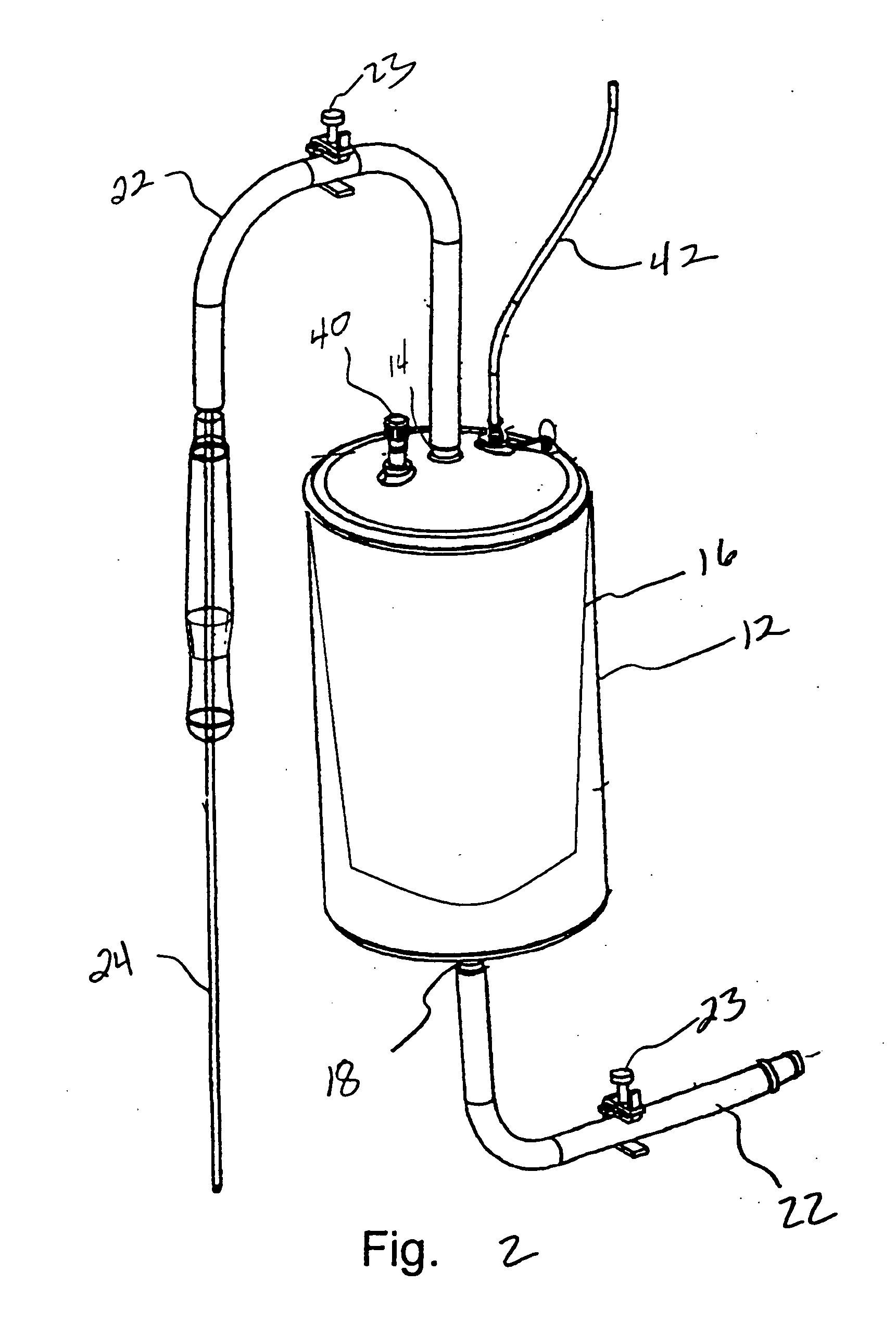Methods of using adipose tissue-derived cells in the treatment of cardiovascular conditions
a technology of adipose tissue and cardiovascular disease, which is applied in the field of adipose tissue-derived stem cells and progenitor cells, can solve the problems of heart failure, severe limitation of transplantation, and particularly devastating cardiovascular disease, and achieve the effect of relieving operators of the need to manually manage the process
- Summary
- Abstract
- Description
- Claims
- Application Information
AI Technical Summary
Benefits of technology
Problems solved by technology
Method used
Image
Examples
example 1
Expression of Angiogenic Growth Factor, VEGF, by ADC
[0143] Vascular Endothelial Growth Factor (VEGF) is one of the key regulators of angiogenesis (Nagy et al., 2003; Folkman, 1995). Placenta Growth Factor, another member of the VEGF family, plays a similar role in both angiogenesis as well as in arteriogenesis, the process by which collateral vessels are recruited and expanded in response to increased perfusion and shear force (Nagy et al., 2003; Pipp et al., 2003; Scholz et al., 2003). Specifically, transplant of wild-type (PIGF + / +) cells into a PIGF knockout mouse restores ability to induce rapid recovery from hind limb ischemia (Scholz et al., 2003).
[0144] Given the importance of both angiogenesis and arteriogenesis to the revascularization process, PIGF and VEGF expression by ADC cells was examined using an ELISA assay (R&D Systems, Minneapolis, Minn.) using ADC cells from three donors. One donor had a history of hyperglycemia and Type 2 diabetes (a condition highly associate...
example 2
ADC Contains Cell Populations That Participate in Angiogenesis
[0146] Endothelial Progenitor Cells (EPCs) are known to participate in angiogenesis. Circulating endothelial precursor cells have been detected in peripheral blood, cord blood, marrow, and fetal liver (Takahashi, 1999; Asahara, 1999; Asahara, 1997; Loomans, 2004; Shintani, 2001; Vasa, 2001). To determine the frequency of EPCs in adipose derived stem cells, an EPC assay was performed. ADC cells were plated onto fibronectin-coated plates and cultured in endothelial cell medium for three days to remove mature endothelial cells. Nonadherent cells were removed and re-plated. After 14 days colonies were identified by staining with FITC-conjugated Ulex europaeus Agglutinin-1 (Vector Labs, Burlingame, Calif.) and DiI-labeled acetylated LDL (Molecular Probes, Eugene, Oreg.). As shown in FIG. 6, the results indicate an EPC frequency of approximately 500 EPC / 106 ADC cells.
[0147] The presence of EPCs within the adipose tissue deriv...
example 3
In Vitro Development of Vascular Structures in ADC
[0148] An art-recognized assay for angiogenesis is one in which endothelial cells grown on a feeder layer of fibroblasts develop a complex network of CD31-positive tubes reminiscent of a nascent capillary network (Donovan et al., 2001). ADC form similar networks in the absence of a feeder layer (FIG. 7A). Notably, ADC cells obtained from hyperglycemic mice with streptozotocin (STZ)-induced Type 1 diabetes eight weeks following administration of STZ form similar structures at a similar frequency to those of untreated mice (FIG. 7B).
[0149] This is important as patients with diabetes are at increased risk of cardiovascular disease and these data indicate that ADC cells retain their angiogenic ability in the diabetic setting. Thus, diabetic patients can derive angiogenic benefit from their own ADC cells.
[0150] In summary, the results of Examples 1 through 3, above, indicate that adipose derived stem cells contain populations of cells ...
PUM
| Property | Measurement | Unit |
|---|---|---|
| Area | aaaaa | aaaaa |
| Therapeutic | aaaaa | aaaaa |
| Level | aaaaa | aaaaa |
Abstract
Description
Claims
Application Information
 Login to View More
Login to View More - R&D
- Intellectual Property
- Life Sciences
- Materials
- Tech Scout
- Unparalleled Data Quality
- Higher Quality Content
- 60% Fewer Hallucinations
Browse by: Latest US Patents, China's latest patents, Technical Efficacy Thesaurus, Application Domain, Technology Topic, Popular Technical Reports.
© 2025 PatSnap. All rights reserved.Legal|Privacy policy|Modern Slavery Act Transparency Statement|Sitemap|About US| Contact US: help@patsnap.com



